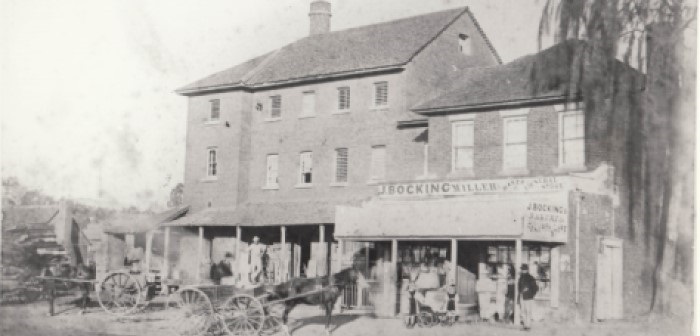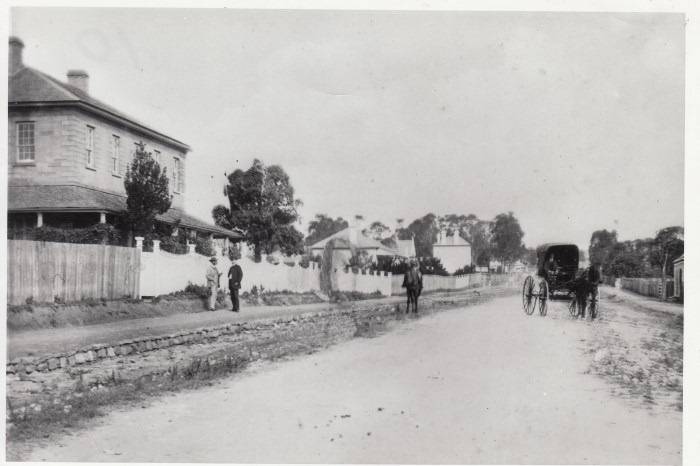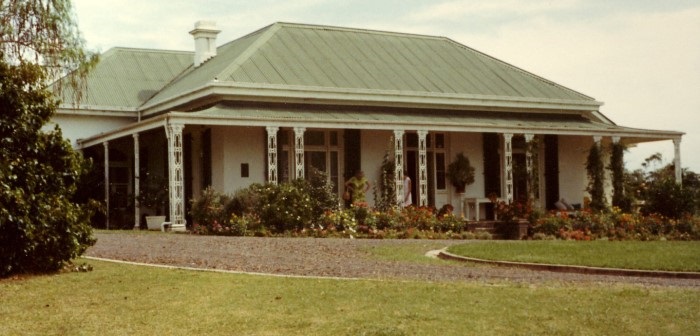St John the Evangelist Church
Built during the 20s and 30s, St John the Evangelist Catholic Church(PDF, 193KB) celebrated its first mass in 1834, and was formally consecrated in August 1841. The church on the hill, St John the Evangelist, has not always been acclaimed for its architecture. Its square form, 2 rows of windows, and low roof was certainly unusual in design. Father John Therry was the driving force behind it's construction. The first Catholic Church built in Campbelltown, this building still stands on the hill, having been through a career change to become a boarding school.

(Image Sourced from Kerry and Jones Collection, Campbelltown City Library)
Kendall's Mill
A relic of the most important industry in Campbelltown's early history, and evidence of Campbelltown's early colonial period status as a granary for Sydney. The industrial revolution came to Campbelltown in the 1840s with the opening of Laurence Kendall's monolithic steam-powered mill at the southern end of Campbelltown's main street. The photo below shows the mill in its busy heyday, with an attached millhouse in which James Bocking later ran a bakery and store. After rust destroyed local wheat crops in the 1860s the mill became a ruin and was pulled down in the 1920s, although Bocking's adjoining millhouse was renovated as Milby Private Maternity Hospital. It is now known as the old Fisher's Ghost Restaurant site(PDF, 227KB) and is a falling-down ruin, but the Campbelltown Catholic Club is hopeful of finding a way to restore it.
Old Kendall Mill House is of State significance for its strong historical association with Lawrence Kendall, who completed the Mill and Mill House in 1845, and operated the mill from 1845 till 1861, living in the Mill House with his family throughout this period. Lawrence Kendall, apart being a significant local figure in Campbelltown, went on to play a significant political role in the early years of governing the City of Sydney, and as a significant businessman. Lawrence Kendall was one of the Millers of Millers Point, after whom Kendall Lane and Mill Lane in Millers Point were named.

(Image sourced from Local Studies Collection, Campbelltown City Library)
Glenalvon
One of the finest examples of this classical type of colonial house in New South Wales. Behind the house are the old stone stables, contemporary with the house, with their dormer windows, gables and bargeboards, adding a picturesque note to the composition. 2020 marks 50 years of public ownership of Glenalvon(PDF, 405KB). Built 1841, by Michael Byrne, this elegant sandstone house now belongs to Campbelltown City Council and is the home of the Campbelltown and Airds Historical Society who hold regular open days and historic tours.

(Image sourced from Kerry & Jones Collection, Campbelltown City Library)
Varro Ville House
With cast-iron verandah supports, french windows and marble fireplaces, it was a local showpiece in the 1840s, when it was owned by James Raymond, the first Postmaster General. Another owner of this beautiful property was the famous explorer, Charles Sturt. Learn more about Varroville House(PDF, 50KB).

(Image sourced from Jackie Green Collection)